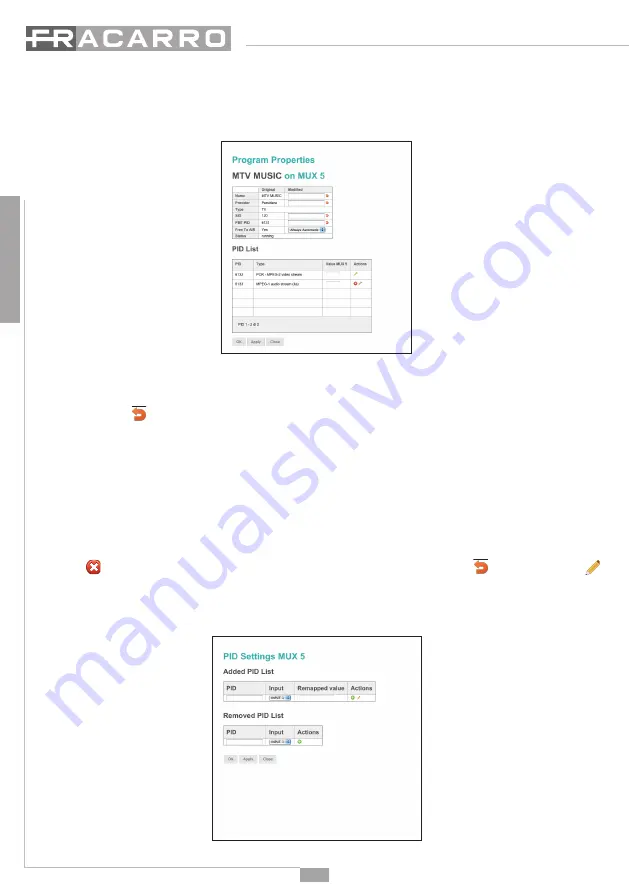
50
English
The following table gives information concerning the total occupied band from the programs (sum of the pro-
grams, excluding the TS and PID common tables) and the indication of the total viewed programs.
By clicking on the icon <properties> in the right hand column, it’s possible to access to more advanced pro-
gram settings. By clicking on the program <program properties>, the following window will appear:
Fig. 10
On the fi rst table, the program parameters can be modifi ed, by writing directly in the blank space, such as:
name, provider, SID, the PMT PDI. When a parameter has been changed it can be reset by clicking on the
arrow on the right
. The last parameter in the list (FREE TO AIR) opens a dropdown settings; through this
menu is possible to select how the digital program can be declared to the set top box: free to air or encrypted:
• always automatic:the program is declared as free to air automatically if it is decrypted by professional cam;
• always yes: the program is always declared as free to air even if it is not decrypted by professional cam;
• always no: the program is always declared as encrypted, even if it is decrypted by professional cam.
• unchanged: the program is declared free to air if it is not changed or if it is not sent to professional cam
for decryption.
The second table is to manage the PID list. The PID values can be changed by entering the values on the
proper blank spaces. It’s possible to change the following PIDs: PCR video stream, audio stream, teletext,
MHP, application information table.
In the last column in this table, by clicking on dedicate icon, a few actions can be performed with each PID
program:
delete the PID (the entire line of the deleted PID is highlighted in grey),
reinstate the PID,
modify PID.
NOTE: CLICK ON “APPLY” TO SAVE THE DEFINITIVE CHANGES
The PIDs advanced confi guration of the selected MUX are located under the OUTPUT window. By clicking on
the “MUX PID confi guration” key, the following screen will be available:
Fig. 11






























